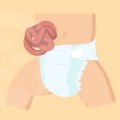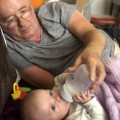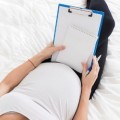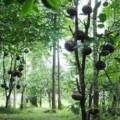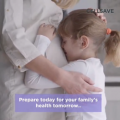You are here
News
2021
Mar 2021 Omidubicel is a proprietary stem cell product produced by Gamida Cell that is manufactured from expanded cord blood. Transplants with Omidubicel mimic the short-term advantages of bone marrow but have the long-term benefits of cord blood. In the short term, Omidubicel engrafts faster than a bone marrow transplant. But in the long-term, Omidubicel has the low graft versus host disease of a cord blood transplant. Omidubicel is like a gryphon, a mythical creature with the head and shoulders of an eagle but the hindquarters of a lion.
Mar 2021 A congenital hernia is any situation where a baby is born with organs protruding through a weak spot in the surrounding anatomy. Gastroschisis is a hole in the abdominal wall that allows some of the baby’s intestines to escape outside its body. A team in Quito, Ecuador, has developed a surgical technique which converts the umbilical cord into a patch that allows gastroschisis to be corrected with a single surgery. Spina Bifida is a birth defect where the spinal column does not close completely, leaving the spinal cord and nerves exposed. A team in California, USA, is correcting spina bifida by performing surgery in utero, using a patch seeded with placental MSC.
Feb 2021 Mohammaed was dying of leukemia. He needed a stem cell transplant from a matching donor, but no one in his large family was a match, and no match could be found among registered bone marrow donors or donated cord blood units. Then Mohammed's mother discovered that she was pregnant. This unexpected 7th child turned out to be a perfect match.
Feb 2021 Another controlled study of cord blood therapy for cerebral palsy confirms that it works. In this study led by Dr. MinYoung Kim in South Korea, Umbilical Cord Blood (UCB) combined with Erythropoietin (EPO) was trialed against 3 other treatment arms. When gross motor skills are measured by GMPM scores (using ratios to eliminate baseline variations), UCB+EPO is 50% better than UCB alone, and 3 times better than EPO alone or control.
Jan 2021 A grandfather in the Czech Republic has received both cord blood and cord tissue cells from his granddaughter as part of his recovery from a serious stroke.
Jan 2021 This is an investigative report about Birth Tissue Procurement Organizations (BTPO), targeted at both healthcare professionals and expectant parents. The BTPO industry is very complex, mainly hidden, poorly regulated, and rife with questionable practices. We give an overview of how BTPO currently operate and where reforms are needed. We sum up with two types of recommendations: a call for professionals to improve supervision of placenta donation and advice for new mothers.
Jan 2021 Many societies around the world have traditions for the proper disposal of the placenta, and often believe that these rituals protect the child.
2020
Dec 2020 Nontraditional families include single parents, same-sex parenting, multi-partnered fertility, and living with grandparents. Today, millions of children in the US are growing up in nontraditional families. These children could benefit from the health protection offered by cord blood banking as much as children in traditional families, if not more so.
Dec 2020 CellSave Arabia celebrates 15 years as the first and largest stem cell laboratory in the Gulf region. While CellSave Arabia primarily offers cord blood banking, they also seek new technologies and services for their customers. CellSave Arabia has partnered with the Abu Dhabi Stem Cell Centre (ADSCC), the healthcare centre that facilitated UAE's first stem cell transplant in summer 2020.
Nov 2020 LifeCell’s Community Cord Blood Bank has saved the life of an Indian child with aplastic anaemia. Two matching cord blood units were provided for transplant at no additional cost - saving lakhs of rupees for the family.


